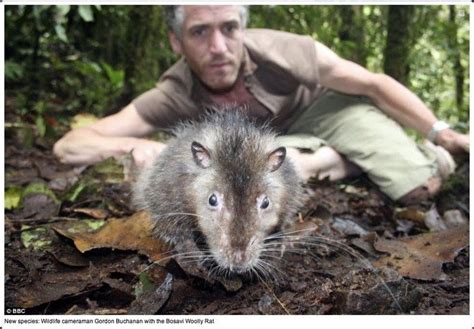
Rare Wolverine Sighting in Michigan’s Upper Peninsula Stuns Biologists
LANSING, Mich. – A trail camera in Michigan’s Upper Peninsula has captured remarkable footage of a wolverine, a rare and elusive predator not typically found in the region, leaving wildlife biologists both stunned and elated. The sighting, confirmed by the Michigan Department of Natural Resources (DNR), represents only the ninth confirmed wolverine observation in the state’s history, with the last confirmed sighting occurring in 2004. The images have ignited excitement within the scientific community, prompting further research and conservation efforts aimed at understanding the wolverine’s presence and potential establishment in Michigan.
“This is exciting news for Michigan,” said Cody Norton, a large carnivore specialist with the Michigan DNR, in a statement released by the department. “While we believe this is a dispersing animal from another state or Canadian province, it highlights that Michigan’s wildlife habitats are capable of supporting this rare species.”
The exact location of the sighting is being kept confidential to protect the wolverine from potential harassment or poaching. The DNR is working to gather more information about the animal’s activities and movement patterns within the region.
A Surprise Encounter: The History of Wolverine Sightings in Michigan
Wolverines ( Gulo gulo) are the largest terrestrial members of the weasel family and are known for their solitary nature, fierce temperament, and ability to thrive in harsh, cold environments. Historically, wolverines inhabited the Great Lakes region, but their populations were decimated by trapping and habitat loss during the 19th and early 20th centuries. They were thought to be extirpated from Michigan until a confirmed sighting in 2004 near Ubly, in Huron County. That wolverine, unfortunately, was found dead several years later, having succumbed to natural causes.
Prior to 2004, historical records indicate a few scattered sightings, but these were largely unsubstantiated. The nine confirmed observations since represent a significant increase, though not necessarily indicative of a breeding population. The current sighting provides further evidence that wolverines, known for their long-distance dispersal capabilities, are occasionally venturing into Michigan.
The initial sighting was made possible due to a partnership with a private citizen using a trail camera on their property. These cameras, often used by hunters and wildlife enthusiasts, are proving to be invaluable tools for monitoring rare and elusive species. The DNR emphasizes the importance of public cooperation in reporting potential sightings and providing photographic evidence.
Understanding Wolverines: Biology and Conservation Status
Wolverines are powerful animals, typically weighing between 20 and 40 pounds. They possess a thick, dark brown coat that provides excellent insulation in cold climates. Their large paws act like snowshoes, allowing them to move efficiently across deep snow. As opportunistic scavengers and predators, wolverines play an important role in maintaining the health of their ecosystems. They are capable of taking down prey much larger than themselves, including deer and caribou, and also scavenge on carrion.
The wolverine’s range extends across northern regions of North America, Europe, and Asia. In North America, they are primarily found in Alaska, Canada, and the Rocky Mountain states. Their populations are relatively small and fragmented, and they face a number of threats, including habitat loss, climate change, and human persecution.
The U.S. Fish and Wildlife Service has twice considered listing the wolverine under the Endangered Species Act. In 2014, the agency proposed listing the wolverine as threatened in the contiguous United States due to the impacts of climate change on their snowpack habitat. However, that proposal was withdrawn in 2020 after a federal court ruled that the agency had not adequately considered the best available science. Conservation groups continue to advocate for the wolverine’s protection, citing the ongoing threats to their survival.
The Michigan DNR’s Response and Ongoing Monitoring Efforts
Following the recent wolverine sighting, the Michigan DNR is intensifying its monitoring efforts to determine the animal’s movements and whether it is a transient individual or a potential colonizer. They are encouraging residents, particularly in the Upper Peninsula, to report any potential sightings and to submit photos or videos if possible.
“We rely on the public’s help in tracking rare species like wolverines,” Norton stated. “Any information, no matter how seemingly insignificant, can be valuable in helping us understand their distribution and behavior in Michigan.”
The DNR is also collaborating with researchers from universities and other organizations to conduct further studies on wolverine habitat suitability in Michigan. This research will help to determine whether the state can support a viable wolverine population and to identify potential conservation strategies.
The presence of wolverines in Michigan is often tied to the availability of suitable habitat, specifically areas with reliable snow cover. Wolverines rely on snow for denning and for caching food. Climate change, with its potential to reduce snowpack in the Great Lakes region, poses a significant threat to wolverine populations.
The DNR’s response includes:
- Increased public awareness: Educating the public about wolverines and encouraging reporting of sightings.
- Trail camera surveys: Deploying additional trail cameras in areas with potential wolverine habitat.
- Habitat assessments: Conducting surveys to assess the suitability of Michigan’s forests for wolverines.
- Collaboration with researchers: Working with universities and other organizations to study wolverine ecology and conservation.
- Law enforcement: Ensuring that wolverines are protected from illegal hunting and trapping.
Expert Reactions and the Broader Significance
The sighting has garnered significant attention from wildlife biologists and conservationists across the country. Experts emphasize the importance of continued monitoring and research to better understand wolverine ecology and to inform conservation efforts.
“This sighting is a reminder that even in highly developed landscapes, there is still potential for rare and elusive species to persist,” said Dr. Emily Clark, a wildlife biologist specializing in carnivore conservation. “It highlights the importance of maintaining habitat connectivity and reducing human impacts on wildlife populations.”
The wolverine’s presence in Michigan underscores the interconnectedness of ecosystems and the potential for species to disperse and recolonize areas from which they were once extirpated. It also serves as a reminder of the importance of conservation efforts in protecting vulnerable species and maintaining biodiversity.
The re-emergence of wolverines in the Great Lakes region could have several ecological implications. As apex predators, they can play a role in regulating prey populations and maintaining ecosystem health. However, their presence can also lead to conflicts with humans, particularly in areas where they prey on livestock or compete with hunters for game.
Challenges and Future Outlook
Despite the excitement surrounding the recent sighting, significant challenges remain in ensuring the long-term survival of wolverines in Michigan. Habitat loss and fragmentation, climate change, and human-wildlife conflict pose ongoing threats.
One of the biggest challenges is mitigating the impacts of climate change on wolverine habitat. As snowpack declines, wolverines may struggle to find suitable denning sites and to cache food. This could lead to reduced reproductive success and increased mortality rates.
Another challenge is minimizing human-wildlife conflict. Wolverines are known to raid cabins and other structures in search of food, and they can occasionally prey on livestock. Educating the public about wolverine behavior and implementing strategies to reduce conflict, such as using bear-resistant food storage containers, is essential.
The future of wolverines in Michigan will depend on a combination of factors, including the success of conservation efforts, the ability to mitigate the impacts of climate change, and the willingness of the public to coexist with these rare and elusive animals. Continued monitoring, research, and public education will be crucial in ensuring their long-term survival in the Great Lakes region. The recent sighting offers a glimmer of hope for the future of wolverines in Michigan, and it underscores the importance of continued efforts to protect and conserve these remarkable creatures.
The DNR is urging anyone who believes they may have seen a wolverine to contact them immediately, providing as much detail as possible regarding the sighting, including location, date, time, and any photographic or video evidence. The Department can be contacted through their website or by calling the local DNR office. The information will be used to further study the wolverine’s presence and hopefully contribute to its long-term viability in Michigan.
The Significance of Trail Cameras in Wildlife Monitoring
The role of trail cameras in wildlife monitoring has significantly increased in recent years. These devices, triggered by motion, automatically capture images and videos of animals in their natural habitat. This technology has proven invaluable for studying rare and elusive species, monitoring population trends, and assessing the impacts of habitat changes.
Trail cameras offer several advantages over traditional wildlife monitoring methods. They are relatively inexpensive, easy to deploy, and can operate unattended for extended periods. They also provide a non-invasive way to collect data, minimizing disturbance to wildlife.
The images and videos captured by trail cameras can be used to identify individual animals, track their movements, and study their behavior. This information can be used to inform conservation efforts and to manage wildlife populations.
In the case of the Michigan wolverine sighting, the trail camera provided irrefutable evidence of the animal’s presence. Without this technology, the sighting might have gone unconfirmed, and valuable information about the wolverine’s distribution and behavior would have been lost.
The increased use of trail cameras by researchers, conservation organizations, and citizen scientists is revolutionizing wildlife monitoring. As the technology continues to improve, it will likely play an even greater role in understanding and protecting the world’s biodiversity. Citizen scientists, in particular, are becoming increasingly valuable as their contributions can significantly enhance data collection over large areas and extended periods of time. The DNR’s reliance on public reporting and photographic evidence underscores this point and highlights the importance of engaging the public in conservation efforts.
In conclusion, the wolverine sighting in Michigan represents a rare and exciting event for wildlife biologists and conservationists. While challenges remain, the increased awareness and ongoing monitoring efforts provide hope for the future of these elusive creatures in the Great Lakes region. The use of trail cameras and the cooperation of citizen scientists are playing a crucial role in understanding and protecting wolverine populations, and these efforts will be essential in ensuring their long-term survival in Michigan.









